
SEO share of voice measures the visibility of a brand in organic search results.
By calculating the proportion of exposure a brand has for specific search terms compared to its competitors, share of voice not only shows the influence of a brand but also helps in improving its market strategy.
Like other critical metrics for SEO, share of voice offers significant insights into the product’s or the brand’s prominence in a specific niche and lets you surpass your competitors.
Monitoring and evaluating the share of voice metric enables businesses to refine their SEO marketing strategies, increasing SERP visibility and strengthening market positioning.
What is Share of Voice in SEO?
Share of voice in SEO estimates organic brand awareness, such as unpaid impressions and clicks your business receives for certain keywords and topics.
When carrying out initial SEO audits or doing performance tracking, calculating SEO share of voice evaluates your brand awareness compared to organic competitors in terms of the number of keywords ranked and their organic rankings.
A higher share of voice represents more popularity and industry dominance over your competitors.
Accurately measuring share of voice also lets you know your target buyer’s behaviors and choices to help you upgrade your brand promotion plan and grow your business profits.
How is SEO Share of Voice Calculated?
Understanding how to measure share of voice is essential for evaluating your brand's influence compared to competitors in the market.
Here is the formula for calculating share of voice in SEO:
Your Organic Search Traffic for Target Keywords/Total Organic Search Traffic for Specific Keywords × 100
For example, if an ecommerce brand’s organic search traffic for the keyword “wireless headphones” is 10,000 visits and the total organic search traffic for that keyword is 50,000, then, share of voice is calculated as (10,000 / 500,000) × 100 = 2%.
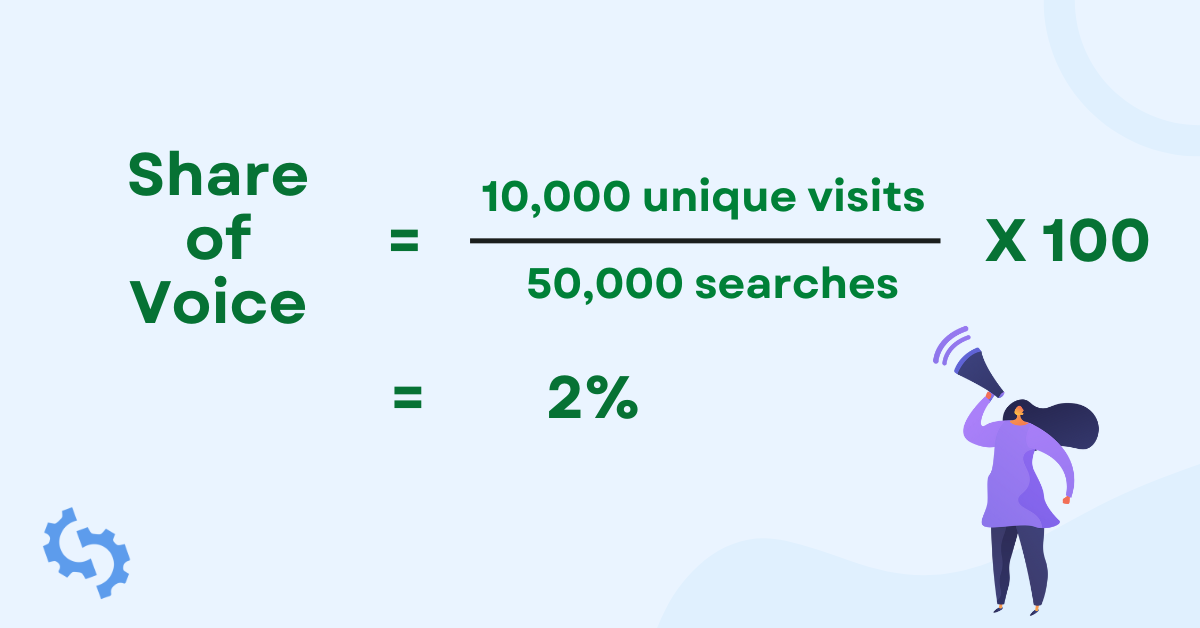
This means that the brand is able to acquire 2% of total organic search traffic share from the keyword "wireless headphones."
For an SEO marketing plan to be successful, there should be hundreds of keywords or more.
You need to calculate the combined branded vs total market share for all the search queries.
Now, you can use impressions or clicks data to measure the share of voice. A higher SEO share of voice score should be the primary objective to help your brand become the top voice in your niche.
How to Increase Share of Voice in SEO
Increasing your share of voice in SEO is crucial to increasing your brand's prominence, authority, and competitiveness in your target market.
Here are the top ways to raise your share of voice:
1. Perform Keyword Gap Analysis to Increase the Number of Keywords
The first tip to improve SEO share of voice is to create content that Google and humans will find useful.
It’s all about making sure your brand is the one people see everywhere in your niche. To do that, I start with finding content gaps—those places where competitors are ranking and we aren’t. Then I dive into creating content that’s just flat-out better, more valuable, and actually useful for the audience.
- Nathaniel Miller, Founder at The SEO Marketing Dad
Keyword gap analysis helps you compare your site with your competitors to identify the search terms that rank the highest and attract the most traffic.
Begin by listing at least three top organic competitors in your niche having a higher overall share of voice score than your website.
Then use a keyword research tool like SEOptimer to find the keywords the website ranks for. Look for search terms that are missing in your SEO strategy.
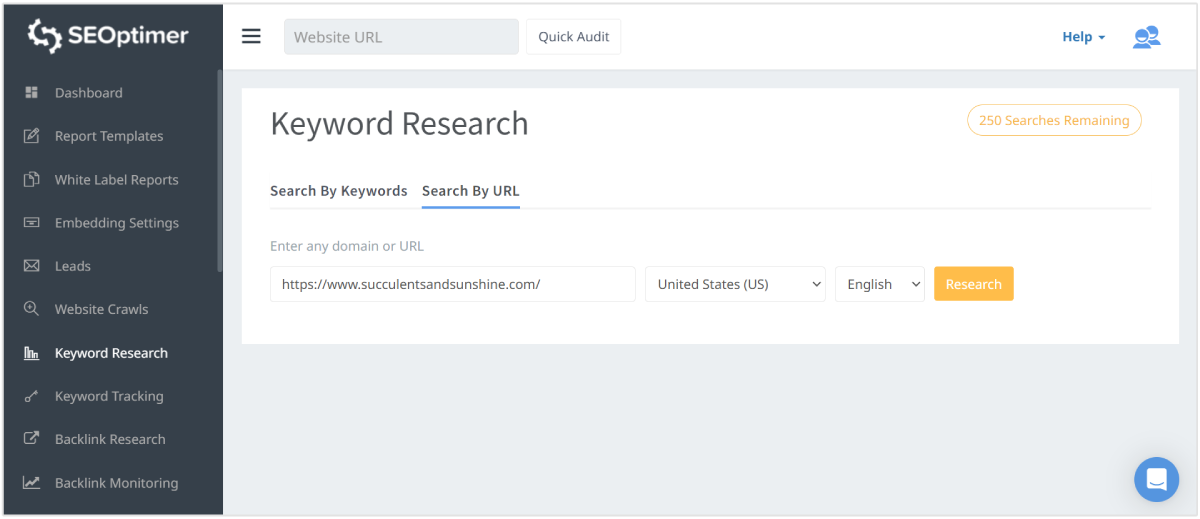
SEOptimer shows the ‘estimated traffic’ that each keyword brings to the website. Keyword-driven traffic data helps you pick the most valuable keywords to use in your search engine optimization plan.
Using the data, prepare a list of all the missing keywords that are relevant to your business.
Repeat it for all the other competitor domains. Now, you will have a list of high-value keywords that your competitors are targeting, but you aren’t.
Create new pages for these keywords and prepare people-first content to outrank your competitors and capture their organic traffic share.
2. Create High-Quality Content Using Topic Clusters
Helpful content positions your brand as a trusted expert, encouraging industry conversations and increasing your business’s presence in relevant discussions.

Improving your SEO share of voice is not any new rocket science in organic marketing. For years, we’ve helped our clients establish themselves as a top voice in their niche, and increase their share of voice gradually. From my perspective, the best way you can maintain a high-level share of voice is by creating the best content in your industry.
- Matthew Woodward, SEO Specialist & Founder at Search Logistics
Tom Jauncey, CEO at Nautilus Marketing, says that brands and business owners should organize content around topic clusters matching user intent.
Improving share of voice in SEO is all about owning your niche and consistently delivering value. One of the strategies that’s worked well for us is leveraging topic clusters—creating a robust pillar page on a core topic and supporting it with detailed blog posts covering subtopics.
This not only helps boost rankings for a variety of related keywords but also establishes authority in your niche, making it easier for your site to dominate search results in that space.
- Tom Jauncey, CEO at Nautilus Marketing
Topical relevance is about grouping related subjects to make content easier for users and search engines to discover, improving engagement and relevance.
Here is an example of keywords grouped by topical relevance:
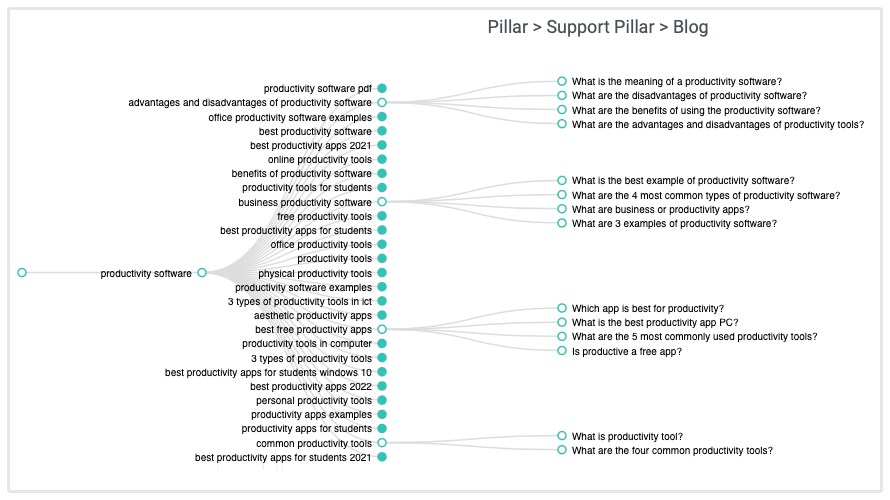
3. Follow E-E-A-T Principles for Content Production
Create E-E-A-T-friendly, helpful, and people-first content having insightful analysis or thought-provoking information.
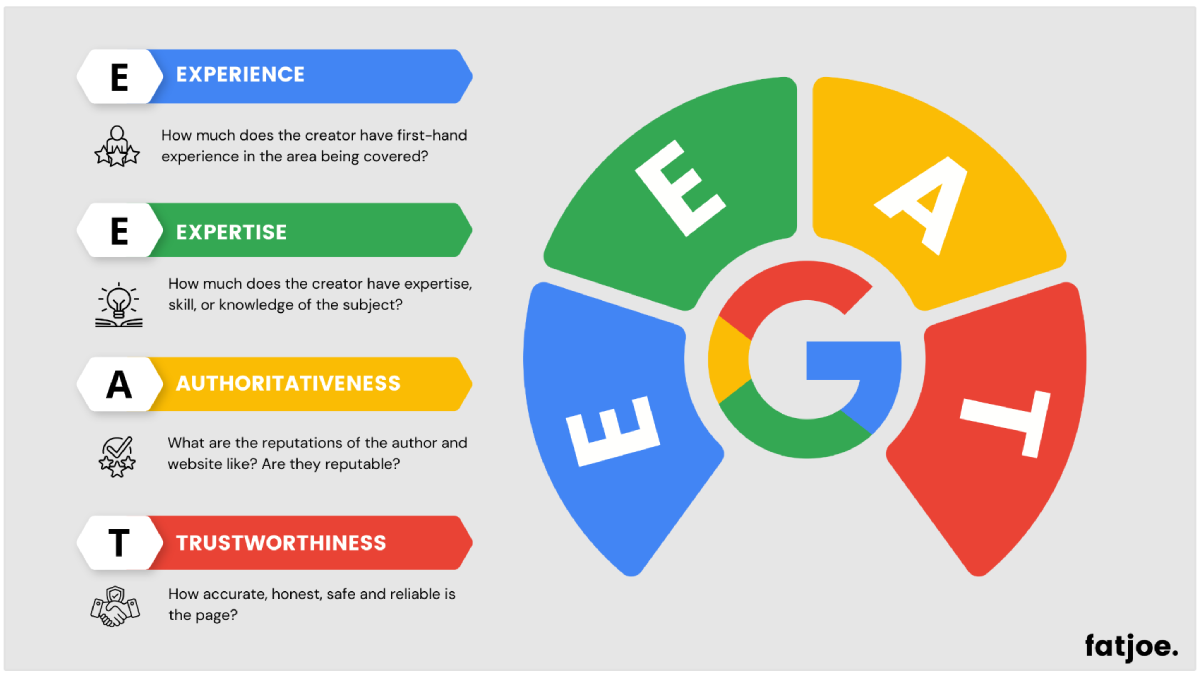
A great way to build your content's authority score is by having it written or reviewed by verifiable experts, especially in the case of YMYL content, because it enhances trust and credibility.
For instance, you can take a look at the content below from WebMD, which has been medically reviewed by a licensed practitioner.
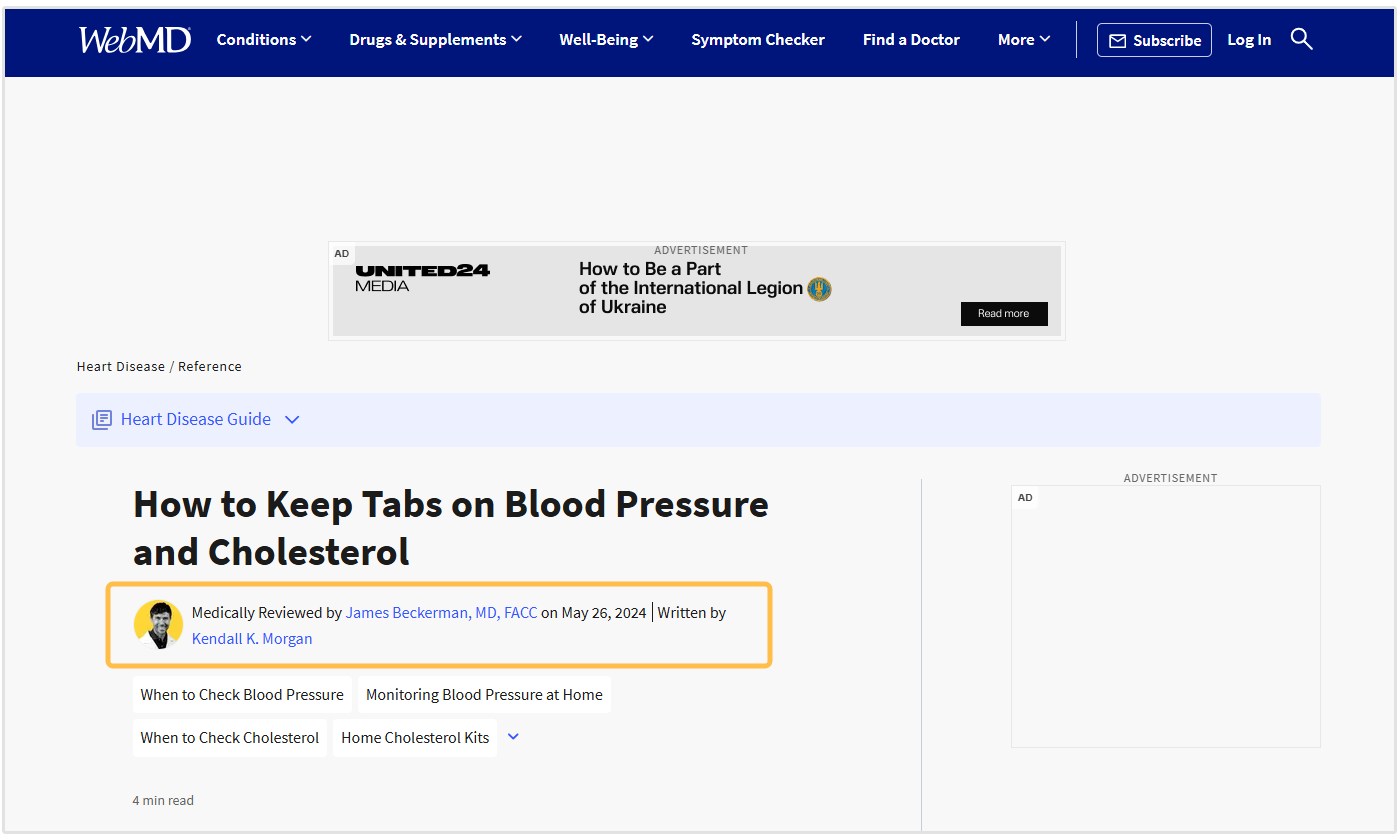
Also, follow Google content guidelines to keep your content quality in check and maximize your website’s search engine visibility.
In terms of the content presentation, keep it direct combined with sentence-level semantic internal links to improve both user experience and SEO performance.
Use Oberstein’s “situational content” principle, which anticipates various outcomes and provides logical next steps based on the advice given.
For example, an article about training a dog to follow commands would also suggest what to do if the dog doesn’t respond as expected, offering alternative techniques or troubleshooting tips.
Carolyn Shelby, Principal SEO at Yoast believes that sites with high E-E-A-T scores will dominate the future of AI-powered search results.
AI-powered search engines filter and select citations based on a site’s authority and expertise, synthesizing narratives with sources that demonstrate high EEAT (Expertise, Authoritativeness, and Trustworthiness).
Developing your brand’s EEAT is now more crucial than ever to be chosen as a trusted source by AI search engines.
- Carolyn Shelby, Principal SEO at Yoast
Such content directly meets readers' specific needs, adopts a conversational tone, and requires genuine expertise, aligning with the principles of E-E-A-T. Situational content also signals that it is written by authors with niche expertise, making it inherently more valuable and difficult for AI to replicate.
4. Increase Your Local Market Share by Leveraging Local SEO
To boost your local market share, prioritize NAP citations for consistency in your business's name, address, and phone number across different platforms such as Google Business (GMB), your website, social media profiles, and any other profiles you've made for your business.

Optimize your website for "city" keywords to improve visibility in local organic rankings and attract relevant traffic.
For instance, if you market a plumbing business in Scranton, Pennsylvania, you would want to optimize for some these keywords:
- plumber in Scranton
- Scranton plumber
- emergency plumber Scranton
Achieving the top spot in the map pack increases your chances of being discovered by potential customers and increases your overal share of voice for SEO.
More importantly, you should maintain an updated Google Business Profile since it massively helps your business appear in local searches.
Here are three useful tactics for improving your local share of voice for search:
- Encourage customer reviews to build trust and improve rankings, while creating engaging local content that speaks to your community.
- Use local business directories to boost your presence and explore opportunities for local PR to raise brand awareness.
- Acquire backlinks from country or region-specific domains to strengthen your local SEO efforts.
Another useful point to remember when improving your SEO share of voice for the local community is producing locally-relevant content.
We recently helped a client in Erie boost their local visibility by creating in-depth content about regional business challenges. Their share of voice jumped 40% because we tapped into real community needs. No fluff, just practical solutions their audience needed.
- David Hunter, Founder at Local Falcon and Epic Web Studios
5. Acquire High-Quality Backlinks
To increase your share of voice and enhance your website's authority, prioritize high-authority link building.
You can start by completing a detailed backlink gap analysis.
Firstly, identify your competitors' most-linked pages and unlinked references to discover new linking opportunities. Again, here you can use the free backlink checker tool from SEOptimer to find your competitor backlinks.
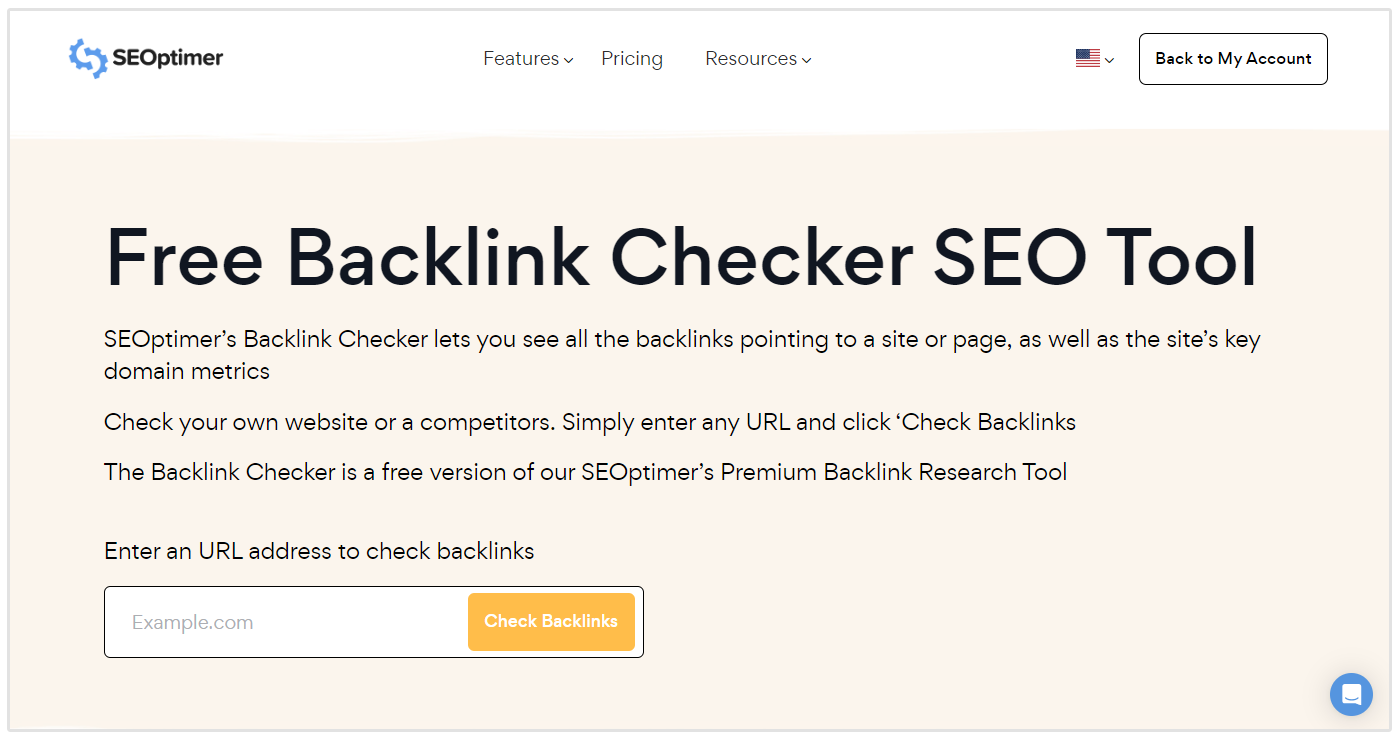
Leverage resource page link building by identifying pages that curate valuable resources in your niche.
Here is an example of a resource page having relevant links to other pages about the vegan diet and lifestyle:
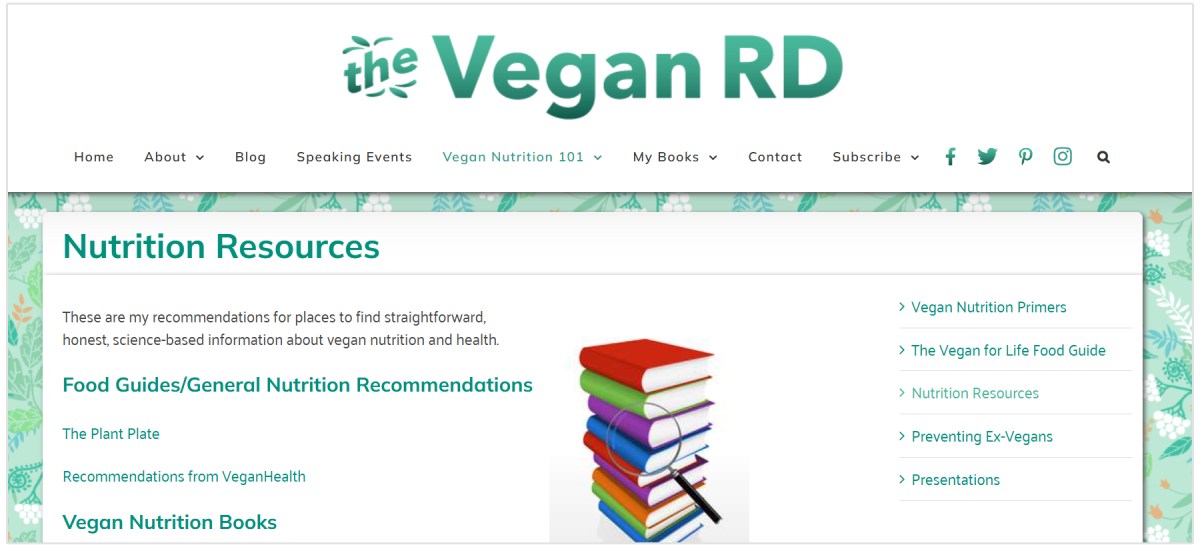
You can reach out to the publisher or webmaster of these relevant resource pages to try and get them to add your content to their resource page.
Truth be told, evergreen content and listicles are the only content formats that remain relevant over time and that also tend to attract the most links. You can also incorporate stats and facts in your content to help to establish niche authority.
Complement your content marketing efforts with PR marketing strategies to boost your content visibility and build relationships with influencers. Do high-value guest blogging and publish original opinion pieces on related sites, earning high PR backlinks that enhance your search of voice.
Leverage infographics to present complex information visually, making it more shareable and increasing your reach.
Another tactic that can work for building our your link profile is broken link building. This entails finding and replacing broken links on relevant sites linking to you or your competitors pages, ensuring quality link acquisition.
6. Update Underperforming Pages to Raise Organic CTR
Raising your organic CTR is another exceptional way to increase your SEO share of voice.
You can check your Google Search Console to identify pages with most impressions that are not performing well. Analyze their current rankings and determine the reasons for their underperformance.
As shown in the below screenshot, you can see the total impressions and clicks for different landing pages.
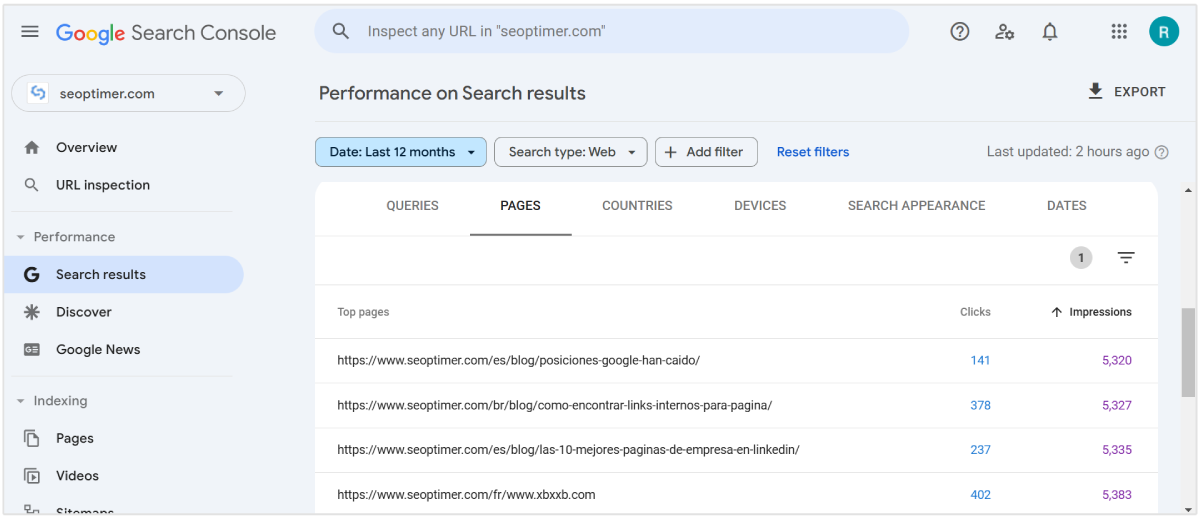
Pick the pages that have a high impression-to-click ratio.
Update these pages with fresh information, relevant stats, and engaging videos or images. Ensure topical completeness and cover all aspects of a subject thoroughly to improve user satisfaction and retention.
A content refresh should also address shifting audience interests, particularly if you notice a high bounce rate or low engagement metrics on specific pages.
You can implement schema markup to enhance how your pages appear in search results, making them more enticing for clicks.
It just makes sense that improving rankings will naturally lead to a higher organic CTR and share of voice for SEO.
How to Use SEO Share of Voice in Your Marketing
Here are the top ways to track your competitor's SEO share of voice to improve your marketing campaign performance.
Content Analysis
Conduct an extensive content analysis to identify where your brand stands in comparison to your competitors.
Things to take note of when evaluating your competitors include their content format, length, and information architecture to understand how they structure their content and what type of content performs best.
Examine how they add internal links, and usage of semantic keyphrases to see how well their content matches the search intent.
Understand the Competitive Landscape
A successful multi-channel content strategy ensures your brand is visible wherever your target audience consumes content.
In our agency work at Epic Web Studios, we use this insight to spot gaps and opportunities. For instance, we noticed a healthcare client was missing out on featured snippets for common patient questions.
By restructuring their content to directly address these queries, they started appearing in prime positions above their competitors.
- David Hunter, Founder at Local Falcon and Epic Web Studios
As a result, you can maintain a strong brand presence across multiple touchpoints.
By evaluating your competitors' approach, you can identify which channels they are prioritizing and where they are gaining traction.
It lets you assess how competitors share their content across content distribution channels, such as blogs, videos, and social media platforms.
Examine Your Competitor’s Social Media & PR Usage
Look at the social media usage of your competitors to measure their engagement levels. Also, brand sentiment analysis should be performed to understand public opinion of their products or services.
Study insights from PR campaigns and use media monitoring to see how they are maintaining visibility.
Brand mentions play a significant role in this evaluation, as they indicate how frequently and positively a competitor is referenced across the web, including news outlets, social media, and blogs.
Here is an example of a brand mention report displaying total brand mentions, social reach, overall social engagement, and audience sentiment analysis:
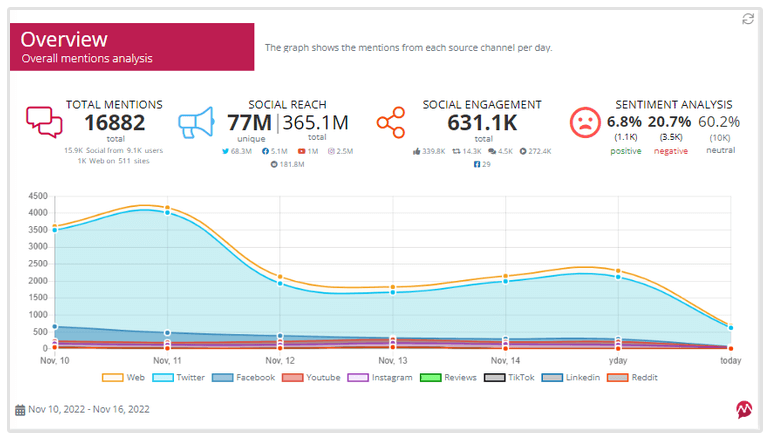
High brand mentions reflect visibility and recognition, contributing to a brand’s overall online share of voice.
Conduct Banklink Gap Analysis
Conduct a backlink gap analysis to examine your competitor’s link profile.
Editorial backlinks from authoritative sites increase domain reputation and search rankings. You can examine your competitor backlinks using SEOptimer.
The tool displays domain strength, page strength, number of backlinks, top referring domains, top pages, and anchors.
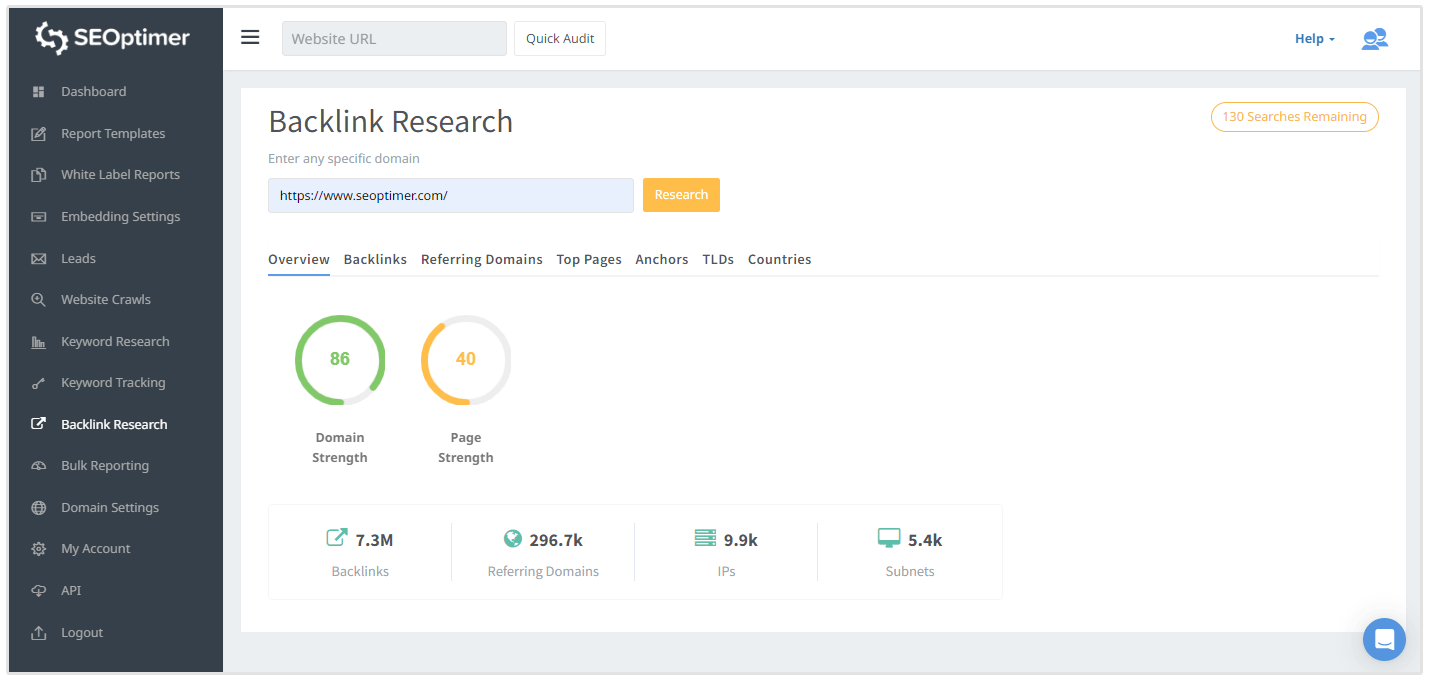
Understanding this gap provides actionable insights into where you can pursue link building efforts. You can plan data-driven link building plans leveraging content outreach, guest blogging, or public relations strategies.
Filling in this backlink gap allows you to boost your domain reputation and, as a result, improve your competitive standing in search rankings.
Besides strengthening your SEO strategy, reducing the link gap also helps you increase your overall share of voice in SEO.
Pay Attention to User Experience
Examining user experience and customer-centric strategies is crucial, as these factors influence how audiences interact with a competitor’s content.
A smooth, engaging UX, combined with content that directly addresses customer needs, can make a competitor's site more attractive to users, leading to lower bounce rates and higher engagement.
We have found that having a good technical website set up is the first step - focusing on fast loading speed, it loads great on mobile, is easy to crawl, and has a basic schema setup. Once this is in place, we move to content.
- Ciaran Connolly, Director at ProfileTree
One of the best ways to uncover problems that are holding back your site from reaching its full search of voice is to use the SEOptimer’s SEO audit tool.
The software completes 100 SEO checks in just 20 seconds and provides an overall grading for your website.
Running an SEO check lets you gain insights into your website’s on-page SEO, keyword rankings, search engine accessibility, Core Web Vitals, backlink profile, mobile performance, and more.
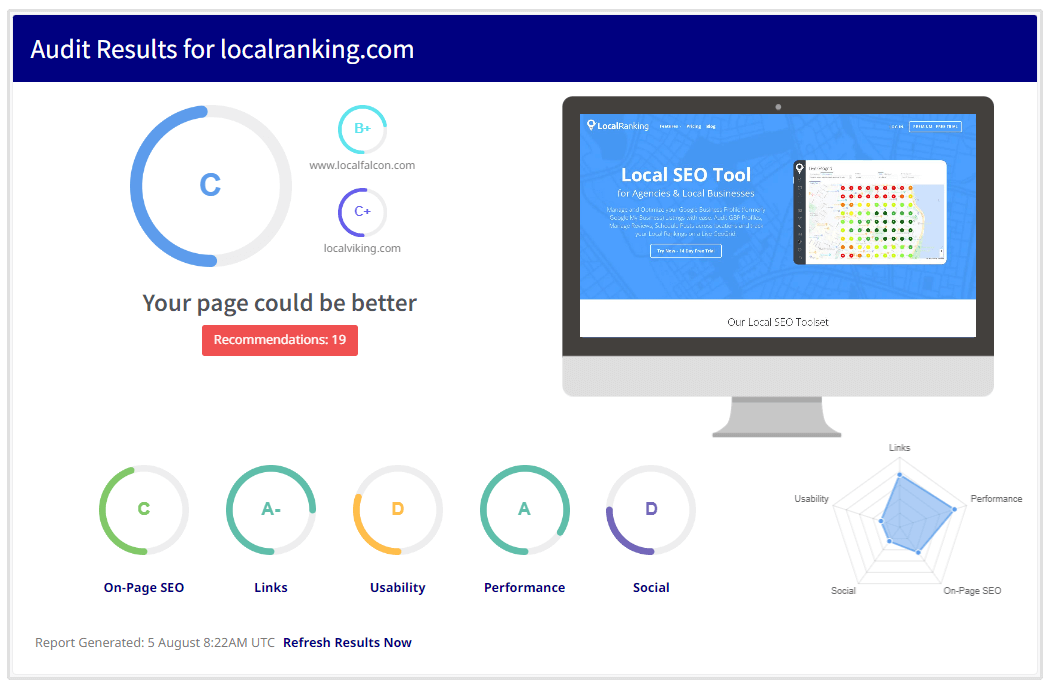
By optimizing for these factors, you can improve user interaction, which directly influences your brand’s share of voice in the market.
Track Competitor Keywords
By tracking relevant keywords that competitors rank for and identifying the specific markets and languages they target, you can get a clearer picture of how they are positioning themselves in the global landscape.
SEOptimer’s keyword tracking tool shows how your competitor’s tracked keywords' ranking positions have shifted week by week, which specific pages on your site are ranking, and the traffic they are generating.
![]()
You can also identify potential content gaps or underserved audiences that you can target to differentiate your brand.
I look at where competitors are winning and identify gaps we can fill with stronger, more authoritative content. This way, we’re not just trying to rank; but trying to improve content with more depth and authenticity.
- Jacqueline Boyter, Founder at Full Throttle SEO
Wrapping Up
Measuring SEO share of voice provides a clear picture of your brand's online visibility. It helps you outperform competitors and capture more attention and awareness.
By capitalizing on new opportunities and taking measures to increase your share of voice leads to greater financial success by elevating your dominance level in the market.
A high share of voice reflects a competitively positioned brand, opening doors to long-term success and market leadership.











